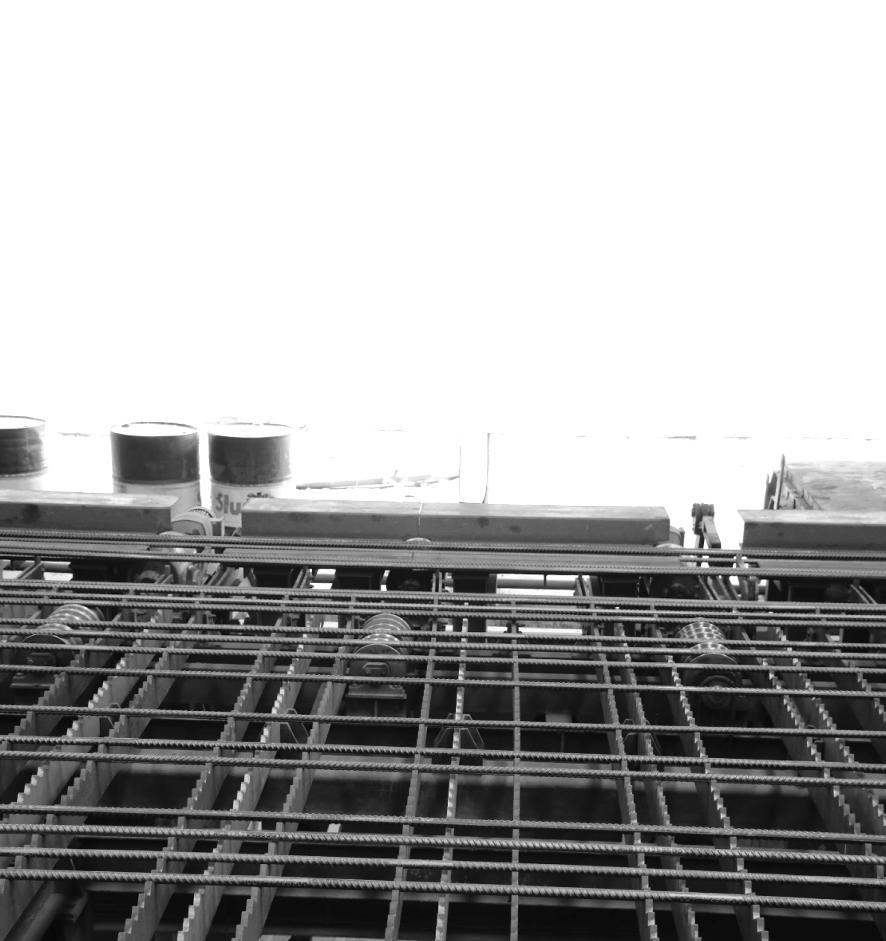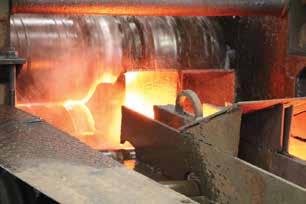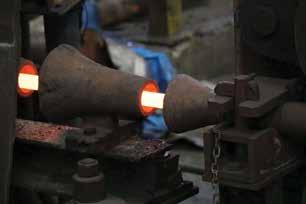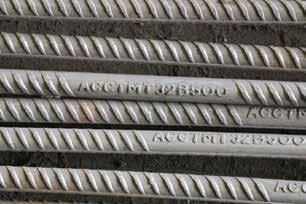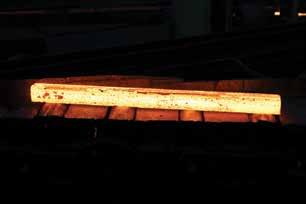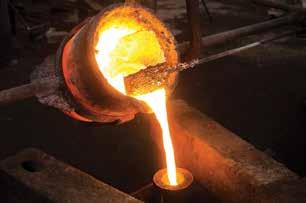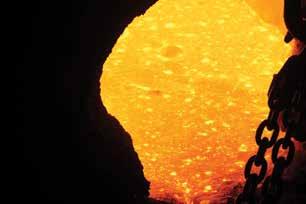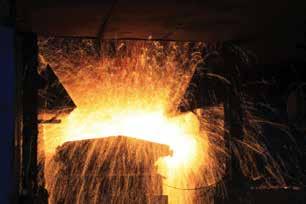




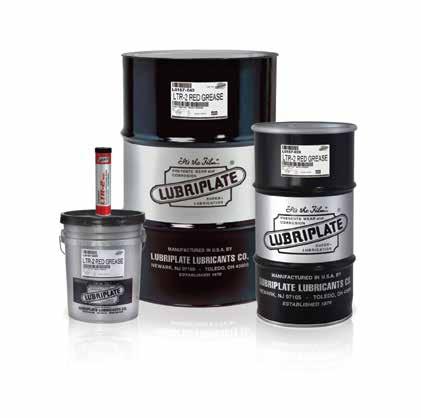









MANAGING EDITOR Robert Barnes
DEPUTY MANAGING EDITOR Francis Makari
EDITOR - in - CHIEF Dennis Ayemba
COUNTRY EDITORS
Uganda - Betty Nabakooza
Nigeria - Boladale Ademiju
South Africa - Jimmy Swira
















EDITOR - in - CHIEF Dennis Ayemba
Uganda - Betty Nabakooza
Nigeria - Boladale Ademiju
South Africa - Jimmy Swira
Arnold Oduor
Sales and Marketing Manager Ken Okore
Dam
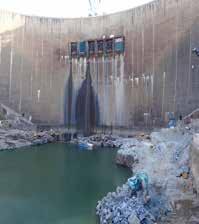
Kenya: William Mutama, Lilian Khavosa, Fred Okoth
Kenya: William Mutama, Lilian Khavosa, Joyce Ndamaiyu, Wendy Kinya
South Africa: Thuli Nkosi, Winnie Sent abire, Angeline Ntobeng,
South Africa: Rachel Molapo, Winnie Sentabire, Angeline Ntobeng, Shephard Mthethwa, Jacqui Nyangabyaki
Uganda: Nobert Turiyo, Selina Salumah Namuli
Botswana: Dickson Manyudza, Gerald Mazikana
Ethiopia: Haimanot Tesfaye, Ruth Girma
Tanzania: Tom Kiage
Malawi: Anderson Fumulani
Ghana: Samuel Hinneh, Caleb Donne Hadjah
Zambia: Susan Kandeke
Zimbabwe: Chiedza Chimombe
Rwanda: Collison Lore
Nigeria: Seni Bello
China:Weng Jie
The editor accepts letters and manuscripts for publication from readers all over the world. Include your name and address as a sign of good faith although you may request your name to be withheld from publication. We reserve the right to edit any material submitted .
Send your letters to: info@constructionreviewonline.com
Construction Review is published eleven times a year and is circulated to members of relevant associations, governmental bodies and other personnel in the building and construction industry as well as suppliers of equipment, materials and services in Africa, the Middle and Far East. The editor welcomes articles and photographs for consideration. Material may not be reproduced without prior permission from the publisher. The publisher does not accept responsibility for the accuracy or authenticity of advertisements or contributions contained in the journal. Views expressed by contributors are not necessarily those of the publisher.
© All rights reserved.
Nyeri-Nyandarua
tender
Dodoma Stadium construction
Additional Unit
Steel Sector at a Glance
Group’s
& Cutting
you should know about excavators
Refurbishment
7 Types of
Retrofit
Compressors
Storage
Mining and Construction News Network
Ballyclare Drive, Bryanston,
(0)011
Projects Unusual Uganda Ltd.
Jemba Plaza, Luwum St. Kampala, Uganda
Tel: +256 776 883181
Haymi Advertising Services
Mazoria, Genet Bldg 4th Flr
1316 - 1110 Addis Ababa
Tel:
118
stadium in

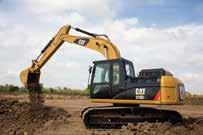
right way to choose an exca
figure
development,
as The
Nairobi,
Kigali,

Nigeria Agent
Tanzania Agent:
Rwanda Agent
In the year 2020 Moldtech signed an agreement with the Menasteel company, located in the industrial zone of Bouznika, Morocco. The objective was the production and installation of equipment that will allow the client to produce all the precast elements for the construction of the new Rabat airport terminal.
The supplied equipment has been installed on the Rabat Airport site, with the aim of centralizing production in this large project, and once the work has been completed, transfer all the equipment to the new industrial plant that Menasteel will install in Casablanca.
For architects, developers and building owners, in today’s age of sustainable construction, there is a new dimension of appreciation and application for architectural detail and materials. Being an innovative contemporary building material, zinc with its natural surface, has for decades played a major role in international architecture.
RHEINZINK – an alloy consisting of 99.995 % high purity zinc with precise defined additions of titanium and copper, is an ecological material that over time, develops a patina that protects its inner zinc core, making the material last for generations.
Known for its quality, durability and lasting value, RHEINZINK allows design ideas to be implemented, giving a cost-effective answer to façade cladding and roofing.

Additions using water drainage systems, roof dormers, canopies, chimneys and with neat, simple zinc trims to windows and roof/ cladding edges, a stylish accomplishment can be achieved.
Moldtech has supplied a 100 m long self-supporting TT slab mould; 80-meterlong universal prestressing system, including 600 tons anchorages, to produce L, T, and rectangular beams; a simple column mold with corbels and a tilting table. All this equipment will allow Menasteel to produce the precast concrete elements for the construction of the parking buildings and the new terminal.
Once the work on the new Rabat Airport terminal has been completed, the Menasteel company will focus its production on the construction of industrial buildings, logistics centers, car parks, shopping centers and special large buildings.
Grupel, a European manufacturer of power generators, has signed an agreement with Cummins Inc. (NYSE: CMI), a global power leader corporation, to develop and manufacture gensets up to 700kVA.
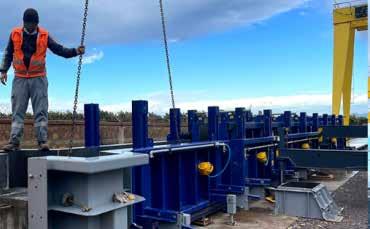
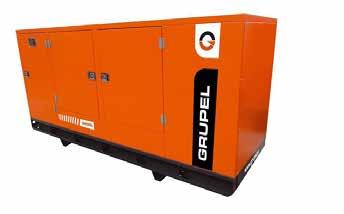
The solutions will be produced in Grupel’s industrial unit, located in Aveiro, Portugal, and aim at meeting Europe’s very demanding low kVA market needs, by making use of Cummins’ over 100 years of experience and Grupel’s expertise and best in class manufacturing capability to support the very demanding low kVA market. The first products resulting of the agreement will reach the market at the end of this year.
Cummins Inc. Executive Director –Industrial Power (Global) and Power Systems (Europe), Ignacio Gonzalez, sees the partnership as a way for the renowned company “to take another step forward in our ability to help our customers be more successful across Europe. We selected Grupel as the perfect partner to help us expand our product range and allow us to rapidly adapt to the changing market requirements and bring products more quickly to market, which is a key competitive advantage to succeed in this demanding segment.”.
Grupel’s CEO, Marco Santos, affirms “this agreement represents yet another important milestone in Grupel’s history of growth and excellence in
the Powergen space. We initiate this partnership as an important part of our expansion plans, a step further towards a greater development of Grupel’s products and a unique opportunity for the enrichment of its product portfolio with new solutions, more adapted to a better and sustainable future.”

Our 40 year Big 5 brand heritage and local expertise creates a foundation for a high quality, face-to-face construction event in Kenya's multi-billion dollar construction market.
This November, join us to increase your business prospects through high-impact networking with senior decision mak ers, serious buyers, and government of ficials. Align your brand with Kenya’s leading event for building and construc tion professionals!
The Big 5 Construct Kenya brings you closer to the political and commercial centre of Kenya. The event effectively drives vital business connections and Vision 2030 objectives, supporting re covery efforts following COVID-19.
Over three days, you can expand your network, build your brand, and generate new business that will benefit you for years to come.
Be part of the unique event dedicated to the building and construction, HVAC, window-door, flooring-alumi num-glass and decoration sectors that will provide you the ultimate business platform for meeting with the sector professionals, leading construction companies from all around the World.
Use this platform to position your company among the foremost organizations in the global scope, enhance your profile as a trusted brand and market leader!
BEST 5 AL GERIA will take place again at SAFEX EXPO CENTER between 10-13 October 2022.
8 -11 November 2022
The reference event in Europe and the Mediterranean Basin for the green and circular economy. Ecomondo is an in ternational hub where all the drivers of the ecological transition are presented and discussed.
Water&monitoring, regenerative economy and risk prevention, waste management and valorisation, circular bioeconomy: hundreds of companies have already decided to come to Eco mondo.
Start ups and innovation, food waste hub and textile observatory, coastal enhancement projects: for the 25th edition Ecomondo will explore many new current topics.
Kenya - Architectural Association of Kenya - Institute of Quantity Surveyors of Kenya - Institute of Engineers of Kenya - Association of Consulting Engineers of - Kenya - Association of Professional Societies of East Africa APSEA)
- Kenya Property developers Association - Institution of Surveyors of Kenya -Town and County Planners Association of Kenya (TCPAK)
South Africa - ASAQS - SAICE
- South African Council for the Quantity Surveying Profession - Khuthaza ( Women for Housing) - Concrete Manufacturers Association - Green Building council of SA
- South African Property Owners Association - Master Builders South Africa Uganda
Institute of Surveyors of Uganda
Uganda Institute of Professional Engineers (UIPE) &
Uganda society of Architects
Botswana
- Institute of Botswana Quantity Surveyors
Ethiopia
- Association of Ethiopian Architects
- Ethiopian Association of Civil Engineers - Construction Contractors Association of Ethiopia Zimbabwe - Zimbabwe Institute of Quantity Surveyors
- Zimbabwe Institute of Engineers
- The Construction Industry Federation of Zimbabwe (Cifoz)
Ghana - Ghana Institute of Engineers
- Architects Registration Council - Ghana Institute of Surveyors
- Ghana Green Builders Association - Ghana Institute of Planners - Association of Building and Civil Engineering Contractors of Ghana
Namibia
- Institute of Namibian Quantity Surveyors
- Association of Consulting Engineers of Namibia Tanzania
- Tanzania Institute of Quantity Surveyors
- Construction Regulation Board (CRB)
- Tanzania’s Registration Board of Architects and Quantity Surveyors (AQSRB)
Nigeria - Association of Consulting Engineers Nigeria
- Association of Professional Women Engineers Of Nigeria
- Council of Registered Builders of Nigeria
- The Nigerian Institute of Architects
- American Association of Petroleum Geologists Africa Region
- Nigeria Society of Engineers
- Nigeria Institute of Architects
- Building and Construction Skilled Artisans Association of Nigeria (BACSAAN)
Zambia
- Zambia Institute of Architects (ZIA)
- Association of Building and Civil Engineering Contractors (ABCEC).
The Zambezi River Authority (ZRA) says that work on the Kariba Dam Rehabilitation Project (KDRP), which includes efforts to reconfigure the plunge pool and rebuild the spillway gates, is underway. The KDRP has been in operation since 2017 and is scheduled to be fin ished in 2025.
Since its start, the project's goal has been to guarantee the structural integrity of the Kariba Dam, therefore assur ing the sustained generation of power primarily for the benefit of the inhabitants of Zimbabwe and Zambia and the broader Southern African Development Community area. The work on redesigning the plunge pool, which involves bulk excavating the rock in the current pool to assist plunge pool stabilization and avoid additional scouring or erosion along the weak fault zone towards the dam foundation, is moving well. This reshaping work will be accomplished by constructing a temporary wa ter-tight cofferdam to complete the reshaping work under dry conditions.
Part of the work on the Kariba Dam Rehabilitation Proj ect (KDRP) involves the use of a crane on the dam wall which will lower the cofferdam pieces into place one by one. The water trapped between the cofferdam and the dam wall is pumped out into the lake, creating the wa ter-free space necessary for the refurbishment work.
A new self-motorised gantry crane will be installed that can place the emergency gate in position to close any of the sluice gates as required. The spillway itself will be commissioned once the six sluice gates have been refur bished and the new gantry crane installed.
A crane on the dam wall will lower the cofferdam piec es into place one by one. The water trapped between the cofferdam and the dam wall is pumped out into the lake, creating the water-free space necessary for the refurbish ment work.
Finally, a new self-motorised gantry crane will be in stalled that can place the emergency gate in position to close any of the sluice gates as required. The spillway itself will be commissioned once the six sluice gates have been refurbished and the new gantry crane installed.
The spillway restoration project is intended to replace secondary concrete and built-in components of the stop beams' upstream guide slots and ensure free movement of the electromechanical equipment used to restrict the flow
of water from the dam's upstream face. An emergency gate is also being built to close sluices in the event of an emergency (to be used where a gate fails to close after the release of excess flood water).
Kariba dam stands at stands 128 metres (420 ft) tall and 579 metres (1,900 ft) long. The dam forms Lake Kariba which extends for 280 kilometres (170 mi) and holds 185 cubic kilometres (150,000,000 acre•ft) of water. Two views of the dam as seen from
Zimbabwe.
Plans to rehabilitate the dam started in 2014 after experts advised that it should be repaired after cracks emerged on its walls. Experts had warned that Africa’s largest man-made lake, which measures 226 ki lometers long and in some places 40 kilo meters wide, would collapse if nothing was done to repair it.
Rehabilitation works on the project in clude; reshaping of the plunge pool down stream of the dam wall, which commenced in 2017, and the rehabilitation of the spillway. The spillway consists of the six

gates in the upper part of the concrete dam wall through which the ZRA releases water into the plunge pool to manage the reservoir water levels.
“The spillway rehabilitation will ensure the con tinued safe, controlled release of water from the reservoir when this is required. It will restore the Kariba Dam to full operability and ensure its continued contribution to energy security and economic growth, prosperity and poverty alleviation in the southern African region,” said
Engineer Munyaradzi Munodawafa, CE of the Zambezi River Authority.
The rehabilitation of the dam is being financed by the European Union (EU), the World Bank, the Swedish government and the African De velopment Bank (AfDB) while the two govern ments have also contributed counterpart funding.
The structural integrity of the 55-year-old, 128-m-high dam wall has been compromised over the years by erosion of the plunge pool, with the foundations chipped down to depths of up to 90m beyond permissible levels through ad vanced alkali-silica reaction in the concrete.
The erosion has undercut and destabilised the wall, putting the entire wall structure at high risk of collapse. An expert report produced by the ZRA has also warned that a continuous swelling of the concrete wall, owing to slow chemical re actions over the years, is constricting the passage of water through the spillways.
Such a constriction of the spillways could obstruct the reservoir’s water-level con trol systems and lead to an excessive build-up of pressure on the wall and po tentially precipitate its collapse. Should it collapse, flooding from the Zambezi river could affect parts of Zambia, Zimbabwe, Malawi and Mozambique, affecting mil lions of people.
Other rehabilitation measures include the design, fabrication and installation of an emergency gate and a new gantry to pre vent the uncontrolled loss of water in the event of floodgate failure, which will re sult in water levels dropping to below the minimum operating levels and interrupt ing power production; the refurbishment of the upstream stop-beam guides; and the replacement of secondary concrete to prevent failure during the operation of stop-beams.
The Kariba dam rehabilitation project will ensure the dam is able to operate at its full capacity to international standards and that the installed power generation capac ity of 1 830 MW.


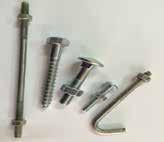
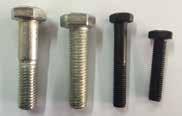
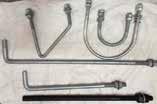




The Kenya National Highways Authority (KeNHA) has terminated the tender for Lot Four (Nyeri-Nyandarua section) of the Mau Mau roads project in Kenya. This section covers the area between Ihururu and Njabini.


This decision puts a damper on plans for the 54 km stretch that runs through the Aberdare Forest to Nyan darua. In addition, it dashed the hopes of traders in Kiam bu, Murang'a, and Nyeri counties. The traders were re portedly looking to link with farmers in Nyandarua.
Reason for the cancellation of the Nyeri-Nyandarua section of the Mau Mau roads project was reportedly due to the fact that the Kenya Wildlife Service (KWS), Kenya For est Service (KFS), and National Environment Management Authority (Nema) all failed to approve the environmental impact assessment, according to a statement from KeNHA.
The EIA approvals would have given KeNHA possession of the site that stretches from Kiandogoro Gate to Mutubio Gate. The 33 km section according to the autonomous road agency is under Aberdare National Park as well as Aberdare Forest.

The ecosystem of Aberdare would reportedly have lost its natural forest because of the proposed road project. 25 kilo meters of the closed canopy are supposed to be traversed by the proposed realignment of the Ihithe-Aberdare Forest-Ka huruko-Ndunyu Njeru road. The road was budgeted for Sh4.4 billion and was supposed to be completed the following year.
The cancellation of the Nyeri-Nyandarua section will not have an impact on the ongoing Mau Mau road project. This was the assurance made to Kenyans by the roads authority. The Mau Mau roads project traverses through Kiambu, Murang'a, and Nyeri.
The Tanzanian government has reported that it is ready to begin con struction of the proposed Dodoma Stadium.
A Deputy Minister stated that currently, the government is looking for funding for the projects and that soon construction will begin. According to Gekul, the Dodoma Stadium project is inevitable. This she explained is because it is in the manifesto of the ruling party. Additionally, she said it is a key facility for the capital city.
Dodoma stadium in Tanzania may not rival the stadium shown in this picture but it is expected to be the largest stadium in Africa. It was pro posed in 2017 after the Moroccan King's visit to Tanzania. Reportedly the stadium will be built at an estimated cost of US $100m.
The facility will be strategically situated in the Nanenane area along Dodoma- Morogoro highway. This will make it visible to all passersby
plying the proposed ring roads that will be running around the stadium. Travelers using the Standard Gauge Railway (SGR) network which is close to the structure will also be in a position to enjoy views of the development.
The architectural design of the structure resembles the iconic Mt. Kili manjaro, the tallest mountain in Africa, from the outside. According to reports the proposed mega stadium will have the capacity to accommo date between 85, 000 to 100, 000 spectators.

Dodoma stadium to exceed First National Bank (FNB) Stadium capacity
The capacity of the Dodoma stadium exceeds that of the First National Bank (FNB) Stadium, currently the largest stadium in Africa. Reportedly, FNB can accommodate 94,736 spectators. For this reason, Dodoma Sta

dium is anticipated to take over FNB’s crown.
The FNB Stadium, AKA Soccer City or The Calabash, is located in Nas rec, bordering the Soweto area of Johannesburg, South Africa. The Cala bash name is a result of the stadium's design which was inspired by a Cal abash. The latter is an African artifact made from the hard shell of a fruit in the gourd family "Lagenaria siceraria" by drying and hallowing it out.
This initiative comes at a time when the government is pushing for a mas sive transfer of people and services from Dar es Salaam to Dodoma. The initiative will reportedly help improve the whole sport sector majorly soc cer in the region.
In addition, the new stadium will put Tanzania in a better position to bid for hosting major continental events. These events include the Africa Cup of Nations (AFCON) and the African Canadian Soccer & Cultural Asso ciation (ACSCA). The stadium will also be able to host other top athletics events such as the All African Games and World Athletics championships.
The planned stadium was first announced in 2016 when King Mohamed VI of Morocco met with the late President John Magufuli and pledged to support him. A signing ceremony was witnessed at the State House in Tanzania. At the time the then president said that the newly planned stadi um will be the biggest in the country. It will be followed by 60,000 seater National Stadium in Dar es Salaam and CCM Kirumba in Mwanza. The latter has a 35,000 capacity.
"The stadium will be the largest in Tanzania. It will be bigger and better than the current national stadium. It will cost between US$ 80m to US$ 100m," President Magufuli said adding that the construction of the stateof-the-art stadium will help improve the whole sports sector, especially soccer in the region.
In 2020, it was reported that seismic, topographical, and feasibility stud ies had been completed. The studies had to be repeated to ensure the max imum safety of the structure and the spectators.
I
Geothermal Power Station is one in a series of six geothermal power sta tions developed by Kenya Electricity Generat ing Company PLC (KenGen), clustered in the Olkaria area in Nakuru County. Olkaria I Power Station was the first geothermal power plant in Africa. The 45 MW plant was commissioned in three phases and has three units each generating 15MW of electricity. The first unit was commis sioned in June 1981, the second and third units in November 1982 and March 1985, respective ly.
A total of 33 wells were drilled for the station. Thirty-one of these are currently connected to the power station while two of these are retired. One of which is currently being used for hot re-injection. The turbines are direct condensing 4-stage running with an inlet steam pressure of 5 bars at temperatures of 152oC and steam consumption of 9.2 t/h/MW. The plant has had an average availability factor of over 95% from commissioning. The power generated is con nected to the national grid via a 132KV-trans mission line.
Olkaria I Additional Unit (AU) 6
In December 2018, KenGen started the con struction of Olkaria I Additional Unit (AU) 6 following a ground-breaking ceremony that was graced by then President, Uhuru Kenyatta. The unit was expected to inject an additional 86MW into the national grid further advancing Kenya’s green energy leadership.

Construction of the unit was also aligned to KenGen’s company’s long-term strategy and the Least Coast Power Development Plan (LCPDP) focused on sustainable supply of renewable en ergy in support of the Government
In August 2021, KenGen announced that con struction of the power plant had reached its fi nal phase. According to Managing Director and CEO, Rebecca Miano, the company had started installing a Steam Turbine into the plant. “This is the largest single unit of turbine we will be installing in any of our power plants with a ca pacity of 83.3MW and with its installation we are now entering the final phase of construction
of the power plant,” said Miano.
At the same time, she revealed that Fuji Electric, the turbine manufacturer had deployed Techni cal Adviser who would oversee the whole in stallation process and ensure success. “This is the first time a Fuji Turbine was being installed not only in Kenya but in Africa,” she added.
She further added that the technical adviser would be assisted by a team of Engineers from both Fuji Electric and KenGen. “The turbine installation and its auxiliaries will take approxi mately three months including dynamic balanc ing. The installation of turbines will run along with other major installations such as Generator Step Up Transformer (GSUT), Auxiliary trans formers, MV and LV Switchgears, Non Con densable Gas extraction system, Cooling water system, Air Compressor system, Heating and Ventilation system and Emergency Diesel Gen erator,” said the CEO.
“With these activities running concurrently, it will ensure that the power plant’s commission ing is achieved in the last quarter of the year 2021,” she asserted.
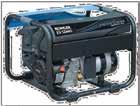

In early April 2022, KenGen said in a statement that construction of the 83MW Olkaria I, Addi tional Unit (AU) 6 Geothermal Power Plant had been completed, kicking off work to connect it to the national power grid. This achievement came after the successful delivery of full steam to the power plant, which set in action technical steps that would lead to commercial operation in June 2022.
The statement also revealed that the plant was undergoing reliability testing to validate its pro duction; the final procedure that signaled the end of the building era. The initial steam admis sion, which is an essential aspect of evaluating the turbine’s functionality, was carried out by the turbine manufacturer, Fuji Electric Glob al, in collaboration with the project contrac tor, Marubeni Corporation. The tests occurred roughly nine months after the work to install the steam turbine at the new power plant began. President Uhuru Kenyatta finally commissioned


the power plant in late July 2022, propelling KenGen’s geothermal capacity to 799MW and also increasing its total installed energy capaci ty to 1,904MW.

Speaking at the ceremony, President Kenyatta commended the KenGen team and stakeholders involved in undertaking the project which was implemented during the COVID-19 peak peri ods in 2020 and 2021. “This is indeed a great milestone for not only KenGen but the rest of Kenyans as far as developing clean energy is concerned. Clean and safe energy is increasing ly becoming vital in energy development, and it is through this approach that we shall attain universal access to electricity in our nation and meet key energy needs,” he said.
During the event, Cabinet Secretary, Ministry of Energy, Amb. Dr. Monica Juma, said that the completion of the project project marks another milestone in Kenya’s efforts towards achieving energy security as well as accelerating econom ic growth through improved energy access. “It
represents an important moment in our efforts to reduce the country's reliance on fossil fuels and create a more sustainable future for us all,” said the CS.
For his part, KenGen Board Chairman, Gen. (Rtd) Samson Mwathethe said that the project is vital for the nation because adequate supply of electricity is undeniably a primary enabler for our economic development. “Through the expe riences of this project, we are glad we managed to gain new experiences in geothermal develop ment. Notably, the commissioning of Olkaria I Unit 6 propels us an inch closer to the Geother mal Gigawatt Club,” he added.
His sentiments were echoed by KenGen Man aging Director and CEO, Rebecca Miano, who noted that the company’s geothermal agen da was to increase production in line with the growing demand for power while also ensuring that the business lives up to the expectations of shareholders.


THE SUCCESSFUL COMPLETION OF OLKARIA 1 AU6 PROJECT. WE ARE PROUD TO BE ASSOCIATED WITH
The steel sector contributes significantly to Kenya’s growth, with the Ministry of Industri alization, Trade, and Enterprise Development re porting a 13% contribution to manufacturing GDP. Recently, major players such as Apex Steel, Dev ki, Accurate Steel Mills, Doshi and Jumbo Steel have breathed new life into Kenya’s steel output, signaling hope that prices for steel products may yet reduce. For example, Devki Steel Mills has recently invested over $450 million in a new raw steel mill in Kwale County that will increase steel production in Kenya by 500,000 tonnes.
The newest entrant in the market with a new fac tory set up in Kilifi County is Jumbo Steel – a sub sidiary of Jubilee Jumbo Group. The factory uses recycled steel to produce at least 130,000 tonnes per annum for the local market.
These developments will keep base prices for steel stable and inspire even more building activity.
There are several broad product areas that are clearly discernible from the current players.
Heavy gauge steel is composed primarily of metal framing solutions for industrial and commercial
developments. These include I-beams for building columns and beams, H-beams, joists and box gird ers for bridges and foundations, heavy plates for joint connections, and steel decking.
Light gauge steel comprises similar products al though smaller in thickness. Light gauge steel members and pre-engineered building solutions are useful for reducing building costs. In partic ular, light gauge steel building solutions have a wide variety of use cases not limited to industrial and commercial buildings – these could be resi dential and mini-houses, lodges, and small office buildings.
Some local companies producing fabricated heavy gauge and light gauge structural steel include Steel Structures Ltd, Thermal Steel, and Jumbo Steel Mills.

General structural steel includes angle sections, chequered plates, mild steel plates, galvanized steel, U-channels, flat bars, hoop iron, T-sections, and z-purlins. Most Kenyan steel producers or suppliers deal in general structural steel.
Cold-formed hollow sections
Cold-formed hollow steel is also a major category of products that are locally produced by a vast majority of steel companies, ranging from Devki Steel, Tononoka Steel, and the Abyssinia Group.
Hollow products include circular, rectangular, and square hollow sections. Black and galvanized pipes are also produced locally.

Another category of local steel produced in large quantities is roofing and cladding products. These products may vary from metal-coated and paint-coated sheets, purlins, light steel trusses, tubes, ridges, gutters, open and box profiles, and other steel com ponents. Major companies in the space include MRM, Corrugat ed Sheets Ltd., and Zenith Steel.
Another major category of steel products produced locally con sists of fencing and wire products. These vary from chainlinks, barbed wire, binding wire, BRC and panel mesh, wire rods, gal vanized wire, razor wire, and nails.

Some of the major local producers of wire steel products include Abysinnia Group, Jumbo Steel, Accurate Steel Mills, and Tarmal Steel.
Probably the most consistent and widely supplied steel product in the local Kenyan market is reinforcement bars (rebar). Ther momechanically Treated (TMT) bars are the latest innovation to hit the Kenyan market. Unlike other rebar manufacturing tech niques, TMT bars don’t require cold twisting, thus improving their tensile strength, bendability, and resistance to corrosion.
Most Kenyan steel manufacturers or suppliers have rebar prod ucts in their inventory which has led to highly competitive prices which have benefited local consumers. In fact, before and after Covid, steel prices were amongst the most stable in the category of building products.
These include silos, galvanized steel tanks for water, edible oils, and petroleum products, pressed panels, specialized roofing and cladding systems for warehouses, aircraft hangars, and multirack systems for goods storage.

Cutting and drilling of steel members are key processes whenever a steel structure is being fabricated. When using manual methods of cutting and drilling, a lot of time is taken in the preparation works and in the actual processing especially where a large number of steel components are involved.


The Doshi Group has been a market leader in Kenya’s steel industry for decades offering products and services that meet the ever changing consumers’ needs. In 2014, after seeing the numerous challenges fabricators were facing when fabricating steel structures, the company invested in a CNC Cutting and Drilling Facility that features a state of the art machine from Germany. It was the first of its kind in the market then, cementing Doshi Group’s position as a leader in innovation.
Doshi’s CNC machine comes with a high cutting performance and precision of up to ± 0.05 mm ensuring high levels of accuracy. The powerful clamping system holds the material in place reducing vibrations for best cutting results. Besides its good impressive functional benefits, the machine also enables data import from the design programs in use. This implies that a client can share their architectural or structural drawings and it is possible to generate shop floor drawings and a corresponding cutting list.
The use of CNC drilling and cutting offers numerous advantages that enhance productivity giving fabricators & contractors a competitive edge. This is mainly through reduction in fabrication time by as much as 50%, guaranteed precision of cut and drilled sections and reduced inventory cost.
The process eliminates hidden costs caused by delays due to long fabrication time and helps in improving the fabricator’s cash flow by enabling mass production that leads to reduced project turnaround time.
“One thing that the CNC has done for me is to give me the power to compete with the bigger players in this business. The accuracy with which the sections are processed have enabled me to deliver turn key projects that are up to standard within agreed timelines.” Says one midsize fabricator who regularly uses the service.
The process of manual cutting will often require referring to shop floor drawings from time to time leading to high incidences of human error. With CNC cutting, errors are negligible since drawings are downloaded directly from the design/ drawing software.
An extra step of grinding is often required in manual cuts to achieve a clean finish; CNC Cutting eliminates this by producing smoothly finished cuts on the first go. Scribing and contour marking is also possible which allows for easy identification of sections and quick assembly at the workshop or on site.
In 2020, Doshi’s CNC Cutting and Drilling enabled the delivery of a 2,631 m2, 2 storey steel building within a 3-month period. The contractor was under immense pressure given the timelines yet the project involved a large amount of steel sections that needed precise cutting and numerous holes to be drilled on some. Manual processing had proved to be laborious and time consuming. The contractor consulted Doshi for a solution. To start off, a few samples were processed to demonstrate the speed and accuracy with which the work could be done. Each column had between 150 – 200 holes which were to be drilled with great precision and this was only possible with a CNC line. After the samples processing was over, the contractor was impressed and agreed to having the steel processed at Doshi of which 133 columns were done within a few days. Eventually Around 80% of the steel used in the project was processed through the CNC facility.
Some Projects that have been successfully implemented using this service include: The Nairobi Hospital Covid-19 Facility; KTDA factory Projects; Chaka Market; The SJSS Temple in Nairobi; Various Church roofing projects; Foot bridge projects along major roads in Nairobi among many others.
Doshi - Steel Division continues to offer superior quality products and services suited for water systems, conveyance and as structural solutions for construction, agriculture, mining, automotive, oil & gas and plumbing industries. Our product range includes Steel hollow sections, GI pipes, Z-Purlins, Steel Plates, Beams and columns, Angle Lines, Channels, Expanded metals and many more.


An excavator is an important piece of heavy equipment for many construction projects. Quite often an excavator is called a digger. You can use an excavator for all types of jobs, such as landscaping, material handling, mining projects, demolition, construction, and river dredging. Every construction site should have an excavator because this machine does more than its share of work. An excavator is used for digging. It can dig a hole, trench, or foundation quickly, meaning this can speed up the task on your construction site. Because this piece of equipment is expensive, it’s a good idea to hire one at excavator rentals.
You can use an excavator to lift heavy amounts of soil on your job site. These popular earthmoving vehicles have an arm, rotating cab, bucket, and movable tracks. These parts offer superior mobility and power, allowing the equipment to do a variety of functions. You can find different types of excavators, such as small machines that can perform drilling and digging functions and large excavators that come with different tools designed to handle heavy-duty projects. Therefore, before you decide to rent an excavator, you need to consider its speed, size, and working conditions on the job site like the soil types and amount of space. This article discusses what you should know about excavators.
An excavator features a bucket, dipper, and boom. These pieces attach to a cab that is on a rotating house, and many houses tend to rotate 360 degrees. An excavator is usually available with either wheels or tracks, though this depends on the nature of the project and manufacturer.
You can find excavators in a wide range of sizes and some of them can weigh at least 180,000 lbs. This equipment has several other attachments that work like the digging bucket to help the machine perform a variety of tasks. By switching the bucket with a drill, auger, rake, or ripper, you can use the excavator for many different jobs.
The right way to choose an excavator for your project is to figure out what you want the equipment to do. Therefore, you should identify the right size of potential excavator, the attachment required, and the length of times you need it. It’s a good idea to rent the right size equipment rather than trying to fit one piece for a variety of jobs.
The variety of excavator rental sizes and attachments you can find on the market makes it necessary in excavation work of all sizes. The different sizes allow these excavators to be utilized in large construction projects as
well as small backyard renovation projects. For example, wheeled excavators are quite common in urban areas because their wheels don’t affect pavements and finished roads compared to the traditional metal track.
Remember that you can decide to choose the cable excavator or hydraulic excavator. The difference between these excavators is that a cable excavator utilizes a series of steel cables and wires to move the main parts. On the other hand, a hydraulic excavator works by letting the driver utilize levers to manage the hydraulic fluid movements which pushes and moves the cylinders that control the bucket and boom of an excavator.
One of the popular types of excavators you can decide to rent is called a crawler excavator. Unlike a large excavator that runs on wheels, a crawler excavator runs on two large endless tracks and is great for heavy-duty construction jobs and mining. Also called a compact excavator, this excavator uses a hydraulic mechanism to lift heavy soil and debris.
It has a chain wheel system that allows it to scale hills and slide down with less risk. Because of this, a crawler excavator is ideal for landscaping uneven terrain and grading hilly areas. It may be slower than other types of excavators, but it offers greater flexibility, balance, and stability.
A wheeled excavator is another type of excavator. Remember that a wheeled excavator is similar in appearance and size to a crawler excavator, but it runs on wheels rather than tracks. Using tracks instead of wheels makes this excavator faster and easier to maneuver on asphalt, concrete,
and other flat surfaces while providing the same power capabilities.
Since wheels provide less stability on an uneven surface than tracks, a wheeled excavator is commonly utilized for urban and roadwork projects. But operators can decide to add an outrigger to enhance stability when transitioning between concrete or asphalt and an uneven surface.
There is also a dragline excavator which is a larger excavator that functions with a different process. This machine uses a hoist rope system designed to attach to a bucket through a hoist coupler. You should note that the other part of the bucket connects to a dragline that goes from the bucket to a cab. And, the hoist rope can raise and lower the bucket and the dragline tends to pull this bucket toward the driver.
Because of their weight, a dragline is usually assembled on-site. The system of this kind of excavator is often utilized in large-scale civil engineering projects, such as canal dreading.
Then there is a suction excavator which is also called a vacuum excavator. A suction excavator has a suction pipe that can provide at least 400 horsepower. This excavator can first release a water jet so that the ground can loosen.

The pipe which has sharp teeth at its edge can then create a vacuum that takes away debris and soil at least 200 miles per hour. And, the excavation is suitable for delicate underground applications because it can lower the chance of damage.
There is a skid steer excavator that you can hire. Unlike a standard excavator, a skid steer excavator has buckets and booms that face away from the operator. This design allows the attachments to extend over the cab rather than around it. This makes this excavator ideal for more narrow places and maneuvering tricky turns. They are usually utilized for site cleaning, digging pools, debris removal, and residential work, where there is more limited space and objects are far apart.
A long reach excavator can also be rented for construction projects. As the name suggests, it has a lengthier boom and arm parts. This design allows you to have a good operation in hard-toreach areas. The extendable arm of the excavator
can reach at least 100 feet horizontally. This excavator is suitable for demolition projects, such as crumbling and breaking down a wall over a body of water. You can affix different attachments to the arm to do extra jobs like crushing, shearing, and cutting.
Lastly, there is a mini excavator. Recently, most contractors are utilizing mini excavators, which are smaller and lighter versions of the standard
excavator. A mini excavator can reduce ground damage and tends to fit through narrow and crowded sites, such as indoor spaces and parking lots. Also called a compact excavator, a mini excavator usually incorporates zero tail-swing or reduced tail-swing to help it to maneuver tight turns and avoid hitting any obstacles.
You can find different attachments for an excavator on the market. It’s a good idea to rent a specialized attachment so that your equipment can work smoother and function more efficiently for specific projects. You should note that there are at least ten most popular types of attachment for both standard excavators and mini excavators, so you can decide to rent the one that fits your job.
The traditional excavator comes with a bucket designed to dig towards the equipment and cab. You can fit the digging bucket with a thumb to make it easier to move and lift materials. You can attach the other types of buckets to an excavator.
A V bucket and rock bucket are two bucket types that you can attach to an excavator. You should note that rock buckets look similar to digging buckets, though they have a narrow V-shaped edge and longer sharper teeth for cutting. These reinforced structural parts of rock buckets allow them to break through hard rocks while still retaining their structural integrity. And, the V bucket usually makes it easier to dig trenches and is suitable for laying utility pipes and cables.
You can fit an excavator with an auger attachment to help you to dig holes. An auger is powered by a hydraulic circuit and they can reach objects and drill large and deep holes. Remember that augers can have different sizes and specifications for a wide range of digging conditions and terrains. They usually range between 4 and 50 inches in length and may dig at least 32 feet. Another attachment is called a breaker that is similar to a jackhammer, but is much larger. It can offer at least 1,000 lbs of impact energy. This attachment can break into harder surfaces, such as concrete and stone.
There is also a clamp that allows an excavator operator to pick up big materials that are oversized and a bucket cannot pick up. These objects include concrete and tree stumps. You can use the attachment with a bucker or as pieces in a grapple. The good thing is that a clamp can easily be attached and detached from an excavator.
You can also attach your excavator with a coupler. A coupler allows you to switch between attachments and tools quickly without a crew. They are versatile when it comes to moving between processes and tasks on a job site.
It’s worth mentioning that you can also fit your excavator with other attachments. This includes a hammer, compactors, rippers, and many other various types of tools. The good news is that you can find some rental companies that offer shredders and other different types of tools. All these attachments can help to make your excavator multipurpose equipment.
Although it is common practice to use these phrases interchangeably, renovation, refurbishing, and retrofitting each have unique meanings distinct from one another. It is vital to grasp the distinction between these three terms if you are planning on having work done on your home or thinking about making changes to the inside. In this article, we look more closely at these terms and help to clarify the differences.
There are some critical distinctions between rehabilitation, refurbishing, and retrofitting, even though many construction projects combine features of all three categories. Knowing the meaning of each phrase on its own is the most effective method for recognising the distinctions between them.
Retrofitting work could be carried out by local builder, or office refurbishment companies depending whether it is residential or commercial

The process of retrofitting an older structure may be a labour-intensive one for commercial building contractors. They may encounter problems finding solutions, such as demolishing load-bearing walls, rewiring electrical systems, fixing plumbing, and other similar activities.
It might be said that retrofitting is nearly usually the alternative that results in lower costs, however this is not always the case. If a building is too old or out of current, it may need a significant number of costly renovations, repairs, and changes in order to be brought back up to code and have its energy efficiency maximised.
Flooring technology - laying of a floating laminate floor - eco-friendly finishing material
To restore anything to a decent condition of
repair is, in the broadest sense, what is meant by the term renovation. The phrase "renovation" is most often used when discussing home repairs and construction, and it most commonly relates to the upgrading or modernization of an older room, house, or structure. This is because renovation is most commonly associated with home improvement projects.
It is usual for individuals to wish to redesign areas of their houses that they discover have gotten out of date, which often comes under the heading of renovation. It is common for individuals to buy run-down dwellings to renovate them to increase the property's value. Renovating a property may often be broken down into two primary categories: structural remodeling and cosmetic remodeling. This would include the work carried out on renovating kitchens by local kitchen fitters.
The following activities are often included in the scope of structural renovations:
Conversions of the attic and the cellar
Home extensions
Rewiring and re-plumbing
Redesign of floor layouts
The following are examples of cosmetic renovations, which are often more prevalent than structural ones:
Laying new flooring
Painting or putting up wallpaper
Bringing all of the fixtures and fittings up to date
There are a number of factors to consider before painting your room
Renovations like painting and new carpeting are at the heart of every refurbishment project. Although there may be some overlap between refurbishment and cosmetic renovation, refurbishment more specifically refers to the process of upgrading the inside of buildings rather than the outside.
Adding new furnishings and aesthetic touches to space are common types of renovations. It's possible to draw a line between refurbishments and retrofitting when they include replacing obsolete fixtures and fittings and implementing steps to increase the property's sustainability and energy efficiency.

Even if there is a lot of overlap between the three processes, they each have a unique meaning, and it is essential to be aware of those differences if you need any construction work to be done on your property by commercial building contractors.
Air compressors come in a wide array of specifications. As a result, effective air compressor use hinges on choosing the right machine for the job. Here’s a look at seven common types of compressors.
Air compressors are some of the most crucial tools in a construction or rental business. These machines power a vast range of other tools, from nailers to pneumatic wrenches to paint and air sprayers. However, not every type of compressor is ideal for every end-use.

Because compressed air is such a versatile resource, compressors come in a wide array of specifications. As a result, effective air compressor use hinges on choosing the right type of machine for the job. Here’s a look at seven common types of compressors and their ideal applications.
Air compressors fall into two main categories based on how they operate: positive displacement and dynamic. Positive displacement options, like rotary screw compressors, provide a constant flow regardless of outlet pressure. In a rotary screw machine, this happens by a pair of screws rotating in opposite directions to
compress air in a sealed chamber.
One of the biggest advantages of a rotary screw compressor is that it can operate continuously as long as you need it to. They’re also highly durable, often outlasting other types by a couple of years or more. As a result, they’re ideal for prolonged heavy-duty use, like powering jackhammers or sand-blasting operations.
The main downsides to rotary screw compressors are their price and maintenance needs. They’re often more expensive than other positive displacement options and require more care, so smaller operations may want an alternative.
Another positive displacement option is the reciprocating, or piston, compressor. As the name implies, these use pistons to compress and displace air within their chamber. These are among the most powerful compressors for home use, making them a popular choice.
While rotary screw compressors can produce more power overall, reciprocating options can generate a lot with low energy consumption. They’re also more compact than rotary screw
machines, making them better for shorter, more flexible jobs. This low energy consumption and portability make piston compressors an appropriate choice for powering hand tools.
However, these compressors produce more heat and noise than other displacement machines, so they’re not ideal for extended continuous use. For many construction jobs, that’s not an issue, but they may not be the right choice for heavier machinery.
3. Scroll The third main type of positive displacement compressor is the scroll compressor. These machines use two circular scrolls, one that stands still and another that turns inside it to compress air. This design results in fewer moving parts and reduced vibrations, leading to improved longevity.
Scroll compressors produce the cleanest air according to ISO standards. As a result, construction jobs or companies that have to adhere to higher environmental standards may want to use these machines. They're also versatile, operating at various intensity levels.
While quiet and easy to maintain, scroll
compressors don’t produce the most power. Heavy-duty tools and machinery may require a different type of compressor, but more passive applications are ideal for these.
Unlike the first three entries on this list, centrifugal compressors are dynamic. That means they draw air in from the outside rather than using a closed reserve of air. In a centrifugal machine, that happens thanks to a rotor called an impeller spinning inside a cylinder to force air inside.
Some centrifugal machines use multiple stages to increase pressure, delivering more power. Multi-stage compressors can deliver remarkable horsepower, making them ideal for powering heavier equipment. Like rotary screw compressors, these machines can also operate continuously, suiting them to longer jobs.
Centrifugal compressors are also highly affordable compared to similar-horsepower alternatives. However, their reliance on fastmoving parts makes them more prone to issues like stalling or choking.

Axial compressors are another type of dynamic machine. Instead of using an impeller, these use rows of fan blades within a shaft. As air passes through each row, its velocity gradually increases, leading to higher pressure.
These compressors are typically smaller and lighter than their centrifugal counterparts and operate at higher speeds. This lets them provide constant flow rates at high volumes, but often with less pressure than alternatives. You’ll often find them in pumping applications, thanks to their consistency and energy efficiency.
Axial compressors are a key part of jet engine designs, but in construction, you’ll find them in pumping or electricity generation. Overall, though, these are rarer on construction sites, thanks to their high costs.
Another way to divide compressor types is by their lubrication, which falls into two categories: oil-flooded and oil-free. Oilflooded compressors, as their name suggests, have lubrication inside their inner workings. More specifically, they have closed, oil-lubricated compression chambers.
Rotary screw and reciprocating compressors often have oilflooded designs. The constant presence of lubrication means that oil-flooded compressors are often more durable. However, they also run the risk of seeping lubrication, potentially contaminating the compressed air.
Some regulatory bodies require oil-free air in some industries, so construction teams adhering to higher cleanliness and safety standards should avoid oil-flooded compressors. For most low-
power construction equipment, though, these are a safe and cost-effective choice.
Oil-free air compressors, by contrast, don’t have any oil in the compression chamber. Instead, they have built-in, lasting alternative lubrication on their moving parts. As a result, these can produce air without any traces of potentially hazardous oil.
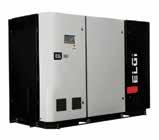
Centrifugal compressors are typically oil-free, and some oil-free rotary screw and reciprocating compressors exist, too. These can be more expensive, but they’ll produce cleaner air and often work at lower temperatures and noise levels. These advantages make them ideal for construction in busy areas or eco-friendly worksites. Oil-free compressors are also better-suited for continuous operation since they require less upkeep. Over time, though, they may need additional work to last as long.


Like any tool in construction, air compressor efficacy depends on matching the right type of machine to the job at hand. The right choice can speed up or cut costs on a project, while a mismatch may incur unnecessary expenses and delays.
Understanding the different types of compressors is key to making the right choice. When you know what your options are, you can make a more informed decision, leading to better outcomes and more successful projects.

Despite the current economic crisis, online sales are still on the up. With these being the case, many retailers are facing the new challenge of limited storage for their products. This could prove to be quite a headache for both storage providers and retailers alike. If you don’t find a way of dealing with it soon, you could end up missing out on a lot of potential business and you’ll fall behind your competitors. Did you know a mezzanine floor might be the solution you need?
What is a Mezzanine Floor?
A mezzanine floor is not just a fancy architectural addition to a posh and luxurious home. A mezzanine offers an intermediate floor in a building that splits the current height of the facility in two with a partial floor that doesn’t cover the whole area. This has become a remarkably smart answer to the current storage questions on people’s minds today.
Rather than forking out for expensive alterations, expansions, or additional buildings, in the unstable financial climate of today, you’re better off looking for more affordable options that can cope with the sudden growth in demand. A mezzanine floor installation is a much more economical and adaptable option that will not use up as much valuable time or money.
Why should you look into installing a mezzanine
floor? There are a few reasons that should motivate you to consider the idea.
You will make better use of otherwise idle vertical space.
You have the freedom and ability to create a purpose build solution ideal for your products or equipment.
You will save money when you choose to install a mezzanine than if you were to purchase bigger facilities or build a physical extension. You can design a space that will accommodate for the inevitable fluctuations in the supply chain. You can create an adaptable, economical facility that you can change and reconfigure as your needs and requirements develop in the future. Bespoke or Multi-Purpose?
Mezzanines are becoming popular across a wide range of industries; therefore, the usage of these spaces varies greatly. Besides offering a great solution to storage problems, these spaces can also be used as office areas, archive housing, showrooms, visitor areas or even display centres. Since mezzanine solutions are structural sound while also being greatly adaptable, they are being put to use in a large number of ways. With this being the case, you need to consider whether you want to opt for a multi-purpose mezzanine or a bespoke solution, where you are involved in the creation process. Specialists in mezzanine floors, like that of Western industrial, will often
recommend that clients play an active role in the design and production of their warehouse solution. That way, through open communication and expression, you will be able to create a space that suits your needs. With the recommendations of experts, you will be able to design and produce a project that ticks all the boxes of your business. Furthermore, the designers can take into consideration the best location for loadbearing frames as well as helping you choose the most appropriate
material for the construction. The whole process will run smoothly, and you’ll have the end-result that best suits you and your business needs. Therefore, as you look into this area of commercial technology, make sure you do your research and find a well experienced team that will produce a space solution that fits your budget, suits your needs and helps you to continue to grow and expand as a company.
the proven
challenge of moving sludge and other liquids



transport solids-laden liquids with a Hard-Iron™

hand to ensure that best pump is at work, handling


of approximately 20% by weight. Service and support
for temporary fluid transfer applications.

Riverside is one of the most prestigious suburbs of Nairobi featuring lush trees, high end homes and Grade A office developments. It is also home to numerous international organizations, diplomatic missions and major local banks. The area is well served by a good network of roads and is accessible from multiple directions. It is also within minutes of driving from major shopping malls, social amenities, healthcare provid ers and top educational institutions. With the completion of the Nairobi Expressway, Riverside joins a number of Nairobi neighbourhoods that are within just a few minutes of Jomo Kenyatta International Airport.
Riverside has continued to attract many premium developers and there has been a buzz of building activity in the area within the last couple of years. International developers have not been left behind.
The London Town Group, a UK-based organization that specializes in
property development, software, automation, clean energy and energy storage services is one of the latest to invest in Riverside. The Group is putting up a state-of-the-art office development comprising over 83,000 square feet of lettable space in a 6-storey building. Over 250 parking spaces have been provided.
The development, known as The Cube, is designed by renowned archi tects BAA. It offers high quality office accommodation, designed to in ternational standards, giving users a secure, highly efficient and flexible working environment.
Cognizant of modern trends where sustainability in construction is in creasingly being emphasized, the development has already attained ad vanced EDGE Certification having taken deliberate steps in design to achieve this important accreditation. The Cube achieves 41% reduction

in energy consumption, 50% reduction in water consumption and 21% reduction in energy embodied in materials. The building has an unrivalled commitment to the environment with the following key sustainability features:
External Shading Devices
Higher Thermal Performance Glass
Energy-Saving Light Bulbs - Internal Spaces
Energy-Saving Light Bulbs - External Spaces

Occupancy Sensors in Bathrooms, Conference Rooms, and Closed Cabins
Occupancy Sensors in Open Offices
Solar Photovoltaics
Low-Flow Faucets in Bathrooms
Efficient Flush for Water Closets in All Bathrooms
Water-Efficient Urinals in all Bathrooms
Water-Efficient Faucets for Kitchen Sinks
Floor Slabs - Concrete Filler Slab
Roof Construction - Concrete Filler Slab
External Walls - Curtain Walling (Opaque Element)
External Walls - Stone Blocks - Machine Cut Unpolished
Internal Walls - Stone Blocks - Machine Cut Unpolished
Internal Walls - Stone Blocks - Machine Cut Unpolished
Flooring - Finished Concrete Floor
Other features that make The Cube a business-friendly address include:
-Generous onsite parking with an excellent parking ratio of 3.3:1000 sq. ft and additional free visitors parking.
-Main power connections with 500KVA and 300KVA Backup Generator. -3 - High speed passenger lifts.
-Highest standards in security incorporating access control to each floor, 24hour security and provision for CCTV surveillance.
-Provision for Fibre-optic connectivity and full trunking for data/ power/voice.
The development is at an advanced stage of construction and is expected to be handed over in the last quarter of 2022.
Enquiries on space and prices are available from Knight Frank. Contact Judy Muange on +254 732 400440.







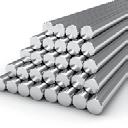

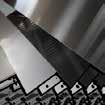




Space is often difficult to find at home. We have so much more stuff now than in previous generations and finding somewhere to put it all can be difficult. From boxes of memories that just need to be stored, to holiday decorations and suitcases which need to be accessible, and then there’s the everyday items like sports kit, school books, clothes and more. Once you’ve filled your rooms with bookcases, cupboards, shelves, and wardrobes, it can be difficult working out where to put the rest of the fur niture!
However, there are ways to create space where you didn’t have it before. Here are some innovative ways to make the best of what you’ve got and how to add extra space if possible.
Invest in some new furniture with inbuilt storage to give you somewhere to keep items like blankets, bedding, DVDs and even the ironing board. From ottoman beds and sofas – where the top lifts up revealing a hollow base with plenty of storage space – to extra deep media units with shelf and cupboard space behind, if you look around, you’re almost guaranteed to find piece of furniture with a nifty solution to your problem.
At the lower end of the budget spectrum, ottoman stools work great for adding extra places to sit and giving you enough space within to store smaller items like shoes and cleaning supplies.
There are dozens of nooks and crannies in every home which could be repurposed as handy storage spaces, thereby freeing up space in your home. Under the stairs is a prime example of space which is always underutilised. Take full advantage of your under the stairs space by in stalling some pull out drawers to store shoes, cleaning supplies, and school essentials and save them from piling up by the front door.

If your home has an attached garage, basement, or an attic space, are you using them to their full capacity? Convert ing them can give you extra rooms, perfect if your family is growing, or if you want to add a home gym, recreation

room, or office. Rooms feel much larger if they have one purpose and trying to cram an office area into a kitchen or bedroom isn’t going to give you the best working atmosphere. Much better to repurpose some existing space and make better use of it.
For those items which need storing outside and boxes which you don’t need easy access to, consider erecting a standalone out building like these freestanding steel huts. With a variety of dif ferent sizes to choose from it’s easy to pop up a prefab shed or garage which will easily store boxes, old furniture, lawnmowers, and gardening tools. They’re weatherproof too, so you don’t need to worry about anything getting ruined by damp. And if you move your storage into an outside building, you’ll have a lot more room inside, and maybe even space for a conversion.
Another way to add extra rooms to your home is to build an ex ternal extension. You could start small with a porch or wet room to store your coats and shoes or think big and add a sunroom
or even a two-storey extension! Make sure you research whether you need planning permission and take into con sideration rights of way to make sure you don’t block ac cess for your neighbours. Extensions will not only give you more space but will add value to your home, although they are the most expensive option on this list.
Adding space is often just a case of exploring better stor age options to help you declutter. If you need a lot more room, because of an expanding family or growing hob bies, then adding an outbuilding or extension, or convert ing an existing room, could be the best solution for you and cheaper than buying somewhere bigger. Of course, for an immediate solution, you could always have a good old clear out and make space that way!

Security cameras are a great deterrent for criminals looking to rob a store. But they’re also more than that. They can help protect your business in the event of an accident, identify any problems with your employees, and help you collect evidence if you ever have a claim against someone. Choosing the best place to install security cameras in your retail business is important. The camera position is crucial for identifying any trouble and should be easily accessible.
It is the best place to install security cameras in your retail business. For example, if a burglar comes in the back door, they’ll need to go through your shelves and find their way up to the ceiling. Put a camera on the top, and when they reach that point, there will be no way around it. It is much better than just putting a few cameras outside or in every corner of your store.
Setting up a security camera in the storage room will do an excellent job of keeping an eye on what is happening. A few cameras here can ensure you always know where to go to find what you’re looking for and that nothing is stolen during business hours. It will also help you track
what stock they use the most and when it needs replenishment.
A camera by the front door can see anyone coming in and going out. You can use it to identify trouble immediately and help you watch over your customers.
Installing a camera over the cash register can be beneficial in more ways than one. If someone tries to rob the store, the camera will catch them and likely find it hard to escape while the police are being called. Even if no criminal activity occurs, this location can be used to keep an eye on employees, like stocking personnel or cashiers.
If a violent criminal comes into the store, one of your best options would be to alert all of your employees and have them hide out until the police arrive. You’ll want cameras on the front door, but keep a camera at the door leading to the sales floor. This way, you can identify which employee is safe and who is still in danger. When the police arrive, you’ll be able to use your security cameras to show them exactly where the criminal is.
It is a great location for security cameras because they can help keep an eye on which employees are coming and going. If an employee comes in with an order, you want to know that they are not up to no good and that everything is legal. You don’t want your employees bringing in items that are stolen or illegal in any way. Security cameras can help you monitor what is happening with employees and your business.


You always want to be aware of how much you have at hand and what you could use more or less of. A camera above your inventory can help you stay updated on stock changes. Your security cameras will also alert you if anything is taken or damaged, saving you the time and effort of hunting for the issue yourself.
Security camera installation is not that hard to do. All it takes is a little research, and you’re good to go. Before you choose where to install security cameras, however, you need to check a few places and ensure they are perfect for the job. You can come up with many different spots in your business and home. Depending on what is best for your situation, you may need one, two, or several.
personalities for personalities
The decision to switch to solar energy is easy for many homeowners. After all, reducing your dependence on fossil fuels is a no-brainer. Unfortunately, understanding the science involved isn’t quite as simple, and shopping for solar panels involves many technical terms and concepts that we don’t typically encounter in our busy day-to-day lives.
We understand you want to know which type of solar panels will perform the best, reduce your carbon footprint, and save money on your energy bills.
Now that you understand the basic science behind solar panels, read over the most popular types of solar panels you will encounter when shopping for a solar system.
Monocrystalline solar panels are one of the most popular solar panel choices. This type of panel currently features the highest efficiency rate, at an average of 24%, and its average lifespan of 25 to 40 years is longer than other solar panels. Monocrystalline solar cells follow a manufacturing process that creates a pure, nontoxic, and stable silicon ingot. This monocrystalline silicon is then sliced from the ingot to create a silicon wafer. This process results in a highly efficient and eco-friendly product.
Mono panels, as they are often called, feature a dark-black color, making it easier for them to blend into a home’s color scheme and design. For example, if you are interested in solar shingles or a solar roof, you will most likely choose monocrystalline panels.
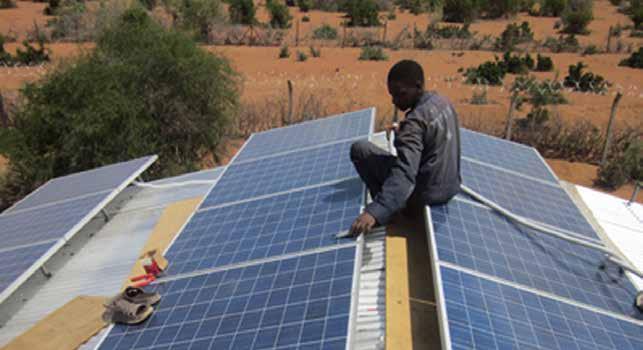
Polycrystalline solar panels are made from different silicon crystals instead of one. Silicon fragments are melted and poured into a mold, leading to limited waste in producing polycrystalline solar cells. However, because they use less pure silicon, they are less efficient than monocrystalline panels. These panels average around 20% in efficiency ratings. Other downsides to polycrystalline include a lower heat tolerance and a shorter average lifespan of 25 to 35 years. You can recognize polycrystalline panels by their blue color. You’ll need a larger roof if you opt for polycrystalline solar panels, as they require more space than monocrystalline.
Thin-film panels are a newer type of solar panel used less often for homes than mono– and polycrystalline. Thin-film solar panels are less efficient, at an average efficiency rate of 19%, and last between 10 and 20 years.
Thin-film panels get their name from the thin layers of semiconductor materials used in them. Materials include silicon, cadmium
telluride, and copper indium gallium selenide. These materials are rolled out as a film on a surface. Companies often sell thin-film panels in standardized sizes of 60-, 72-, and 96-cell counts.
Thin-film panels are entirely black, flat, and flexible in shape and size and have the sleekest appearance among the three types of panels. However, because they are far less efficient, you need many more to generate enough power for your home. However, companies typically sell them at a lower cost.
There are three types of thin-film panels: •Amorphous silicon (a-Si): The silicon in this type of solar panel is not structured on the molecular level as it is with mono– or polycrystalline panels. This design causes a-Si cells to have a rather low-efficiency rate. This thin-film solar panel is better suited for smaller homes or projects, such as a solar-powered workshed.
•Cadmium telluride (CdTe): CdTe has the lowest carbon footprint, water requirement, and energy payback time of all solar panel types. However, CdTe releases toxic cells if inhaled or ingested. This issue makes recycling them an expensive and complicated ordeal.
•Copper indium gallium selenide (CIGS): CIGS panels use layers of copper, indium, gallium, and selenium on glass or plastic. Combining these materials results in the highest efficiency
among thin-film panels, but it still lacks efficiency compared to crystalline silicon panels.
A few other factors might influence which type of solar panel is best for your home:

•Temperature: Monocrystalline and polycrystalline panels have peak efficiency between 59°F and 95°F. Regions with high temperatures during the summer that may cause a solar panel to reach an internal temperature of more than 100°F may see a decrease in efficiency levels.

•Light-Induced Degradation (LID): LID refers to a metric of performance loss that occurs with crystalline panels during the first few hours of sunlight exposure. The sunlight reacts with oxygen left over from the manufacturing process, affecting silicon. LID tends to range from 1% to 3% in efficiency loss.
•Fire rating: International Building Codes require solar panels to match their roof’s fire rating to ensure that the panels do not accelerate the spread of flames. You will see that different panels come with a fire rating ranging from Class A to Class C. Class A provides the most protection in a fire, as flames cannot spread more than six feet. Class B ensures flame spread does not exceed eight feet, and Class C ensures flames do not spread beyond 13 feet.
•Hail: Crystalline panels are better for areas that might experience heavy hail as they can withstand hail hitting at speeds of up to 50 mph. Thin-film solar panels are not ideal for hail, given their thin design.




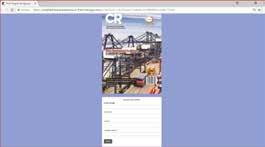
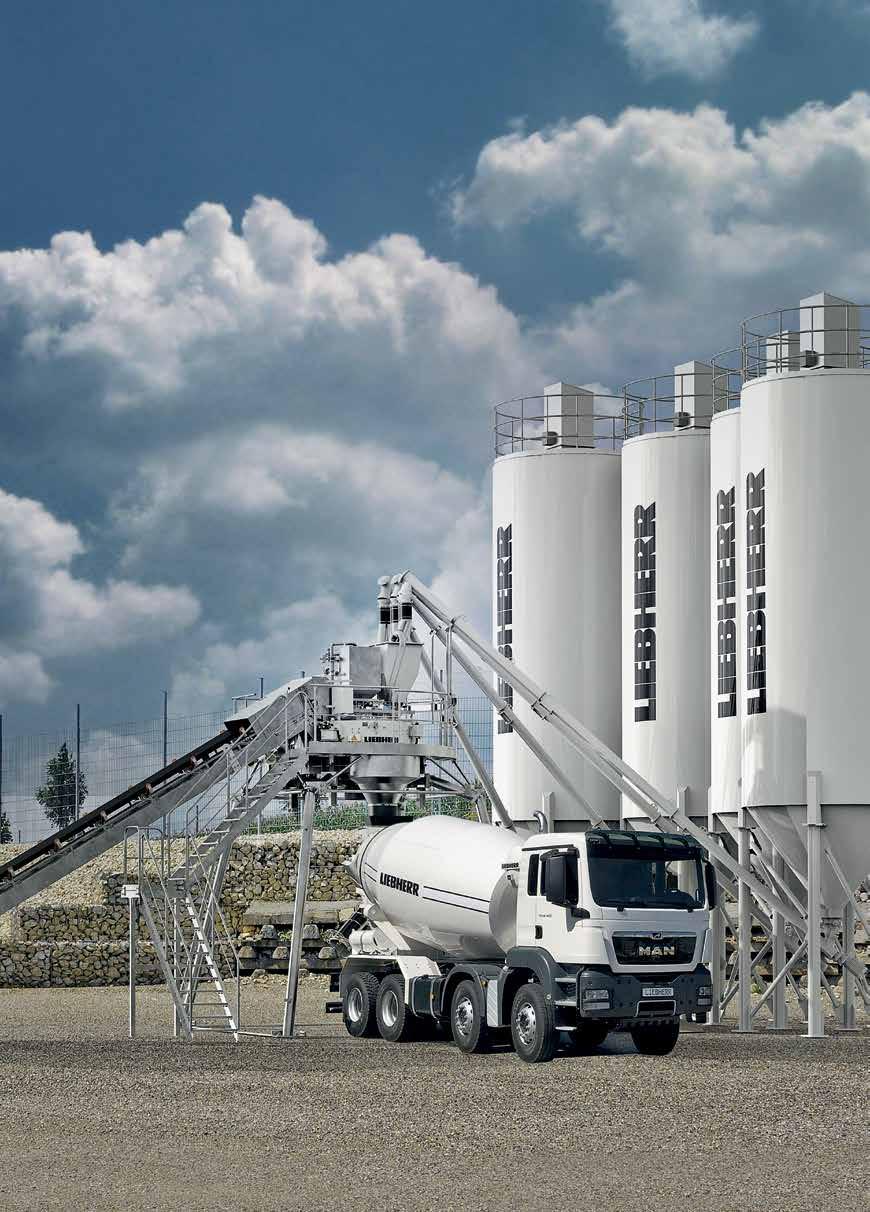
Speed and flexibility ensure your success on construction site.
LCM 1.0 is economical to purchase, easy to transport and quick to assemble. Concrete can hardly be produced more efficiently.
